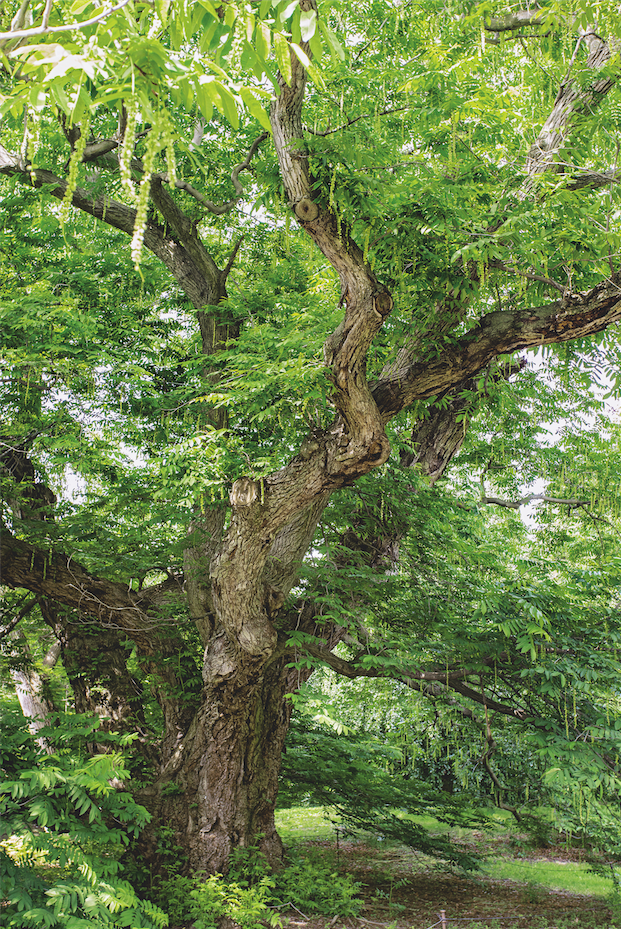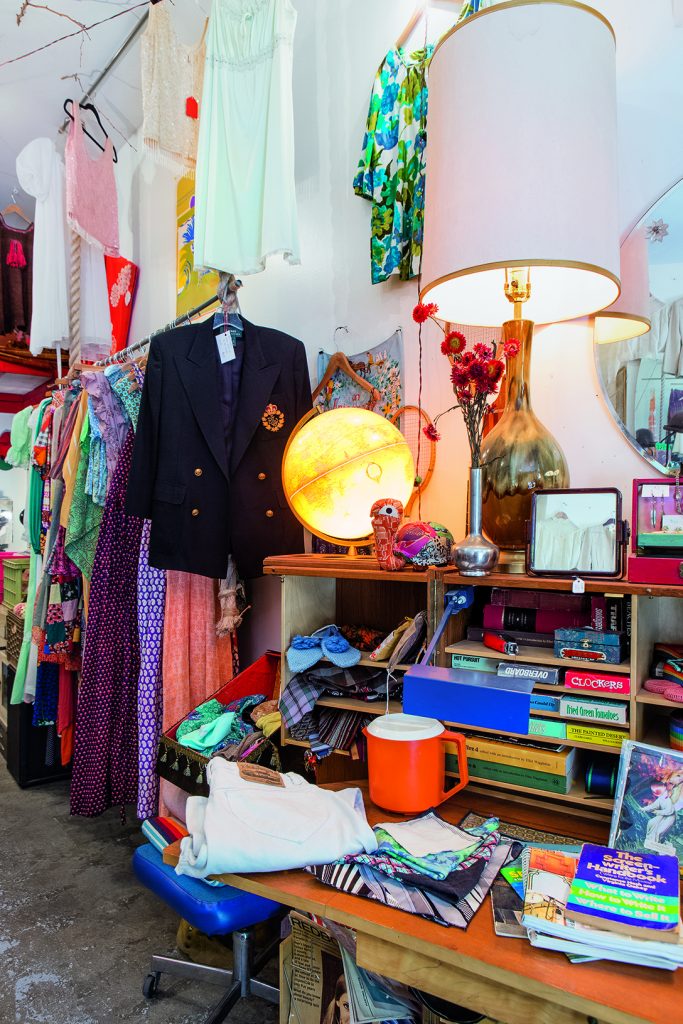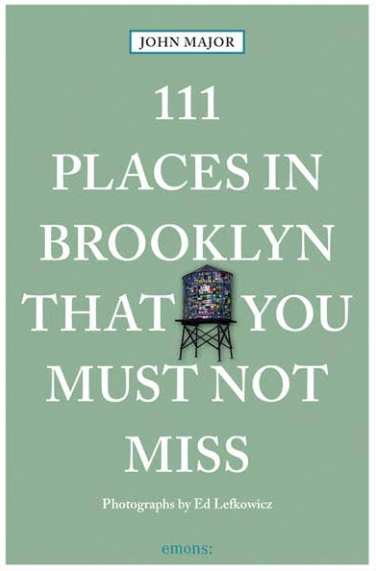111 places in Brooklyn that you must not Miss? It seems impossible to choose. A fiercely independent borough that, were it to be the separate city it was until 1898, would be competing with Chicago for third largest in the country, Brooklyn is headstrong about maintaining that individuality, despite becoming one of the most desirable destination points in the country, if not the world. The rents may have skyrocketed, but Brooklyn remains distinctly one-of-a-kind, with a rich and complex history that is tolerant of the different, the foreign, the weird.
But in my new guidebook, 111 Places in Brooklyn That You Must Not Miss (Emons Verlag), the story I felt it important to tell was of a Brooklyn that is less an undifferentiated mass— and, as a result, somewhat of an abstraction— than a collection of neighborhoods, each with its own character and history created by the people who’ve come here from all over the world. That energy is what drew me here from my small hometown in southern Ohio years ago. It’s what still drives people to come. Churning that diversity into something fresh and unique, something more than the sum of its parts, is what happens here. That is a tall order to capture.
I’ve attempted to curate an experience of our borough that will set readers on a path. It’s a path that meanders past sites like the Weeksville Heritage Center, where the story of one of the first communities of free blacks is preserved, or Pier 69, where a memorial remembers lives lost on September 11th. The journey continues to the doorstep of Brooklyn Owl, where your child can be transformed into a unicorn and “wear their magic” as they complete an in-store adventure, and Gotham Archery, where you can practice your axe-throwing form or transform into Katniss Everdeen with your bow.
In each of the next four issues, Park Slope Reader will feature three of my 111 places to provide a taste of those little known treasures, secret spots and unusual stories Brooklyn has to offer. Springtime is the theme of our first three chapters. Minutes away from Park Slope, Brooklyn Botanic Gardens provides a great setting for very welcome family days outdoors as daffodils, tulips and bluebells reveal their radiant blooms after the long gray winter. Be sure to checkout the venerable Caucasian wingnut there, which, though it sounds like a punchline, is a Brooklyn immigrant, too, arriving as a sapling in 1922 and now more than 45 feet tall. Spring is also the time for trying new things. Why not pay a visit to Jalopy Theatre and School of Music for a chance to learn to play that dusty guitar or banjo you inherited from your grandfather? Finally, spring can be a time when old things can have new life— which happens no place better than at Olly OxenFree Vintage, where a 1950s cocktail dress is ready to go on new adventures with you in it. As with all 111 places, springtime is about new beginnings. So, with book in hand, start exploring your borough like never before!
John Major, Author

Caucasian Wingnut
A Black Sea immigrant lays down roots
Pterocarya fraxinifolia, the Latin name for the Caucasian wingnut, has none of the comic value of the more common English label for this arboreal rarity. Though conjuring notions of a political extremist, the name of this immense and august tree actually identifies it as a member of the walnut family from the mountainous region between the Black and Caspian Seas where Asia butts up against Europe. The species arrived in Europe in 1782, transported by a French naturalist.
Located just north of the Rock Garden in the area alongside Flatbush Avenue, Brooklyn Botanic Garden’s (BBG) own goliath, characterized by its sizeable exposed root mass, is not difficult to find. Arriving from Rome as a sapling in 1922, BBG’s example now measures more than 45 feet in height and has a canopy that extends more than 60 feet (propped up on one vulnerable end), while its gnarled and knotty trunk spans 10 full feet in width. Catkins, a drooping flowering strand up to 20 inches in length, appear during the summer. A second tree, propagated from a cutting taken from this first tree, can be found near the Herb Garden.
A short walk away, just south of the Rock Garden, the Mountain Winterberry, a species from the Appalachians considerably closer to home, was one of the 12,000 plants original to the Botanic Garden when it opened in 1911. The nearby Chinese Parasol tree, so named for its large leaves that can grow to 12 inches in width, has been in residence here since 1925, a gift of the Yokohama Nursery in Japan.
For trees of a decidedly more diminutive sort, don’t miss the C.V. Starr Bonsai Museum. With over 350 specimens, about 30 of which are on display at any one time, BBG’s collection is one of the oldest and largest outside of Japan. One bonsai, a white pine, is more than 300 years old and was brought to Brooklyn from a Japanese mountainside more than 90 years ago.
Address: 990 Washington Avenue, Brooklyn, NY 11225, +1 (718)623-7200, www.bbg.org | Getting there: Subway to Eastern Parkway–Brooklyn Museum (2, 3) or to Prospect Park (B, Q, S) | Hours: See website for summer, winter, and late-night hours | Tip: Inspired to do some gardening of your own? Check out Brooklyn Plantology (26 Brooklyn Terminal Market, 1510, Brooklyn, NY 11236, www.brooklynplantology.com) in Canarsie. At 20,000 square feet, this family-owned business offers a wide selection of seasonal outdoor and indoor plants, plus pots and gardening supplies.

Jalopy Theatre and School of Music
Come for the music, stay for the community
“It’s called the Jalopy for a reason,” co-founder Lynette Wiley notes. “We’re not shiny and polished. We gamble that people will be open to our teachers’ ideas. We’re willing to say, ‘Let’s see what happens.’” Luckily, what often “happens” at Jalopy, both music school and performance space, is unique, even in a borough that prides itself on creativity and diversity.
Lynette and her husband Geoff arrived from Chicago in 2005 with the dream of creating a place where people of all ages, cultures, and abilities could feel at home. Classes and workshops are mostly in the early evenings or weekends. Kids programming (Jalopy Juniors) often ends with parents and children sharing a meal together. The stage becomes a place where musicians of many ethnic groups can interact. “Often, cultural groups only play for their own communities,” Lynette adds. “We give them a chance to experience each other.”
A month’s worth of performances might feature Indian raga, Mexican ranchera, and African drumming and skiffle. Author and actor Sam Shepard occasionally used to perform in a jug band here. Spirit Family Reunion and Blind Boy Paxton have graced Jalopy’s intimate stage. Classes, which have eight students maximum, are arranged in affordable eight-week sets, focusing on how to play particular instruments (guitar, fiddle, banjo, ukulele, and mandolin). No one is too inexperienced. Workshops on subjects like vocal harmony, slide guitar, or Balkan singing are also offered regularly. A small store has refurbished instruments for sale or rent.
“Put down your phone,” Lynette says warmly. “Come in, experience something, be in a room with other people. Just that idea of being present and quiet is tonic, especially for New Yorkers. That’s an education, too.”
Address 315 Columbia Street, Brooklyn, NY 11231, +1 (718)395-3214, www.jalopytheatre.org | Getting there: Subway to Carroll Street (F, G) | Hours: See website for class and performance schedules | Tip: Quilters and knitters may want to check out nearby Brooklyn General Store (128 Union Street, Brooklyn, NY 11231, www.brooklyngeneral.com). The shop carries a great collection of fabrics and hand-dyed wools and offers classes of all sorts.

Olly OxenFree Vintage
Breathe new life into your old wardrobe
Olly OxenFree Vintage is a sanctuary for fashion of bygone eras. The vintage store has been open since 2012 but feels like it has been setting trends for decades. The shop has a clear love for fashion and design from the 40s through 70s with coats, kimonos, cocktail dresses, vintage tees, and full-on costumes, all carefully curated and cataloged in visually stunning ways by Suzy, the store’s owner and founder.
It is easy to get lost among the beautiful fabrics and patterns that swaddle you when you first step inside the space from the bustling sidewalk. There is not a warmer and cozier place in Brooklyn. Suzy decks out every inch of her space to provide a little universe lost in time. She encourages patrons to try on one-of-a-kind pieces that she personally hand selects with care. You can’t help but want to touch and get to know each piece of clothing and learn their stories. Suzy is knowledgeable and is more than willing and able to help visitors find pieces for events, projects, or personal collections. This is the one-stop clothing oasis of your dreams.
Fundraisers and events are always percolating at Olly OxenFree. In the front you might find vintage tees that Suzy worked with artists to adorn with “No DAPL” (No Dakota Access Pipeline), with proceeds supporting the cause. The back of the store has held fundraisers and benefit concerts for Planned Parenthood and Standing Rock, among others. Along with political and social events, Olly OxenFree hosts classes, music events, and readings. Every Sunday the space in the back is opened up for a first-come, first-served yoga class taught by an accredited yoga teacher well versed in tantra and kundalini yoga, who teaches in the city at a top studio but comes once a week for a donation-based class. This store is a must-visit, as it combines the magic of your big sister’s closet and the historical interest of a museum.
Address: 137 Montrose Avenue, Brooklyn, NY 11206, +1 (347)762-5048, www.ollyoxenfreevintage.com, oofvintage@gmail.com | Getting there: Subway to Montrose Avenue (L) | Hours: Mon, Wed, Thu 11am – 8pm, Fri – Sun 11am – 7pm | Tip: Antoinette (119 Grand Street, Brooklyn, NY 11249, www.antoinettebrooklyn.com) offers a balance of old and new on its racks. Roughly 70% of their clothing stock is vintage, while 30% is the work of Brooklyn-based designers.


Leave a Reply